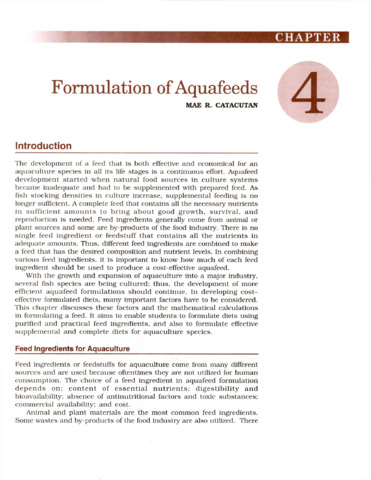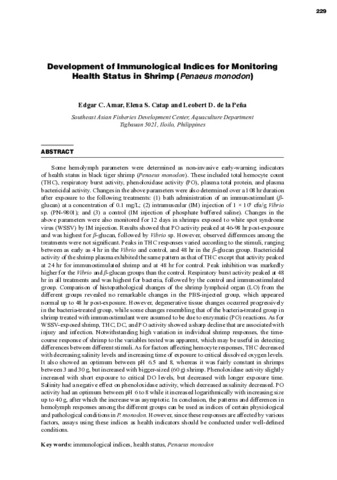Genotype environment interaction in the response of three strains of Nile tilapia to poor nutrition
| dc.contributor.author | Romana-Eguia, Maria Rowena R. | |
| dc.contributor.author | Doyle, Roger W. | |
| dc.date.accessioned | 2013-02-04T07:31:02Z | |
| dc.date.available | 2013-02-04T07:31:02Z | |
| dc.date.issued | 1992 | |
| dc.identifier.citation | Romana-Eguia, M. R. R., & Doyle, R. W. (1992). Genotype-environment interaction in the response of three strains of Nile tilapia to poor nutrition. Aquaculture, 108(1–2), 1–12. | en |
| dc.identifier.issn | 0044-8486 | |
| dc.identifier.uri | http://hdl.handle.net/10862/1394 | |
| dc.description.abstract | Experiments were conducted to determine the effects of poor nutrition on the growth of three Oreochromis niloticus strains fed protein-deficient diets. Four-week-old fry from the three "test" strains were paired with a fourth "reference" strain of tilapia (red) of the same size and stocked in 60-1 aquaria. The treatment lasted 6 weeks, with fish being fed commercial fish feed crumbles for the first and last 2-week periods and rice bran during weeks 3 and 4. Control fish were fed commercial diet throughout. Both control and treatment fish were fed at 20% of fish biomass per day. Lengths and weights were measured every 2 weeks. Significant strain effects were noted when the growth of test fish over the whole experimental period was analysed by analysis of covariance using the reference fish growth as a concomitant variable. The relative growth of the three test strains differed at each feeding phase. The NIFI strain grew best during the commercial feed phases, the Israel strain performed best during the rice bran phase while the CLSU strain, regardless of the type of nutritional environment, usually ranked last. Different performance rankings at each feeding phase represent strong genotype X environment interaction among these commercially important lines. This was statistically confirmed by analysis of covariance of the growth of the Israel and NIFI strains during the different feeding phases using the reference strain as a covariate. | en |
| dc.language.iso | en | en |
| dc.publisher | Elsevier | en |
| dc.subject | Oreochromis niloticus | en |
| dc.title | Genotype environment interaction in the response of three strains of Nile tilapia to poor nutrition | en |
| dc.type | Article | en |
| dc.identifier.doi | 10.1016/0044-8486(92)90314-B | |
| dc.citation.volume | 108 | |
| dc.citation.issue | 1-2 | |
| dc.citation.spage | 1 | |
| dc.citation.epage | 12 | |
| dc.citation.journalTitle | Aquaculture | en |
| seafdecaqd.library.callnumber | VF SJ 0392 | |
| seafdecaqd.databank.controlnumber | 1992-46 | |
| dc.subject.asfa | diet | en |
| dc.subject.asfa | environmental factors | en |
| dc.subject.asfa | feeding experiments | en |
| dc.subject.asfa | fish culture | en |
| dc.subject.asfa | genotypes | en |
| dc.subject.asfa | growth | en |
| dc.subject.asfa | nutrition | en |
| dc.subject.asfa | nutritive value | en |
| dc.subject.asfa | protein deficiencies | en |
| dc.subject.asfa | selective breeding | en |
| dc.subject.asfa | yields | en |
Files in this item
| Files | Size | Format | View |
|---|---|---|---|
|
There are no files associated with this item. |
|||
This item appears in the following Collection(s)
-
Journal Articles [1258]
These papers were contributed by Department staff to various national and international journals.




